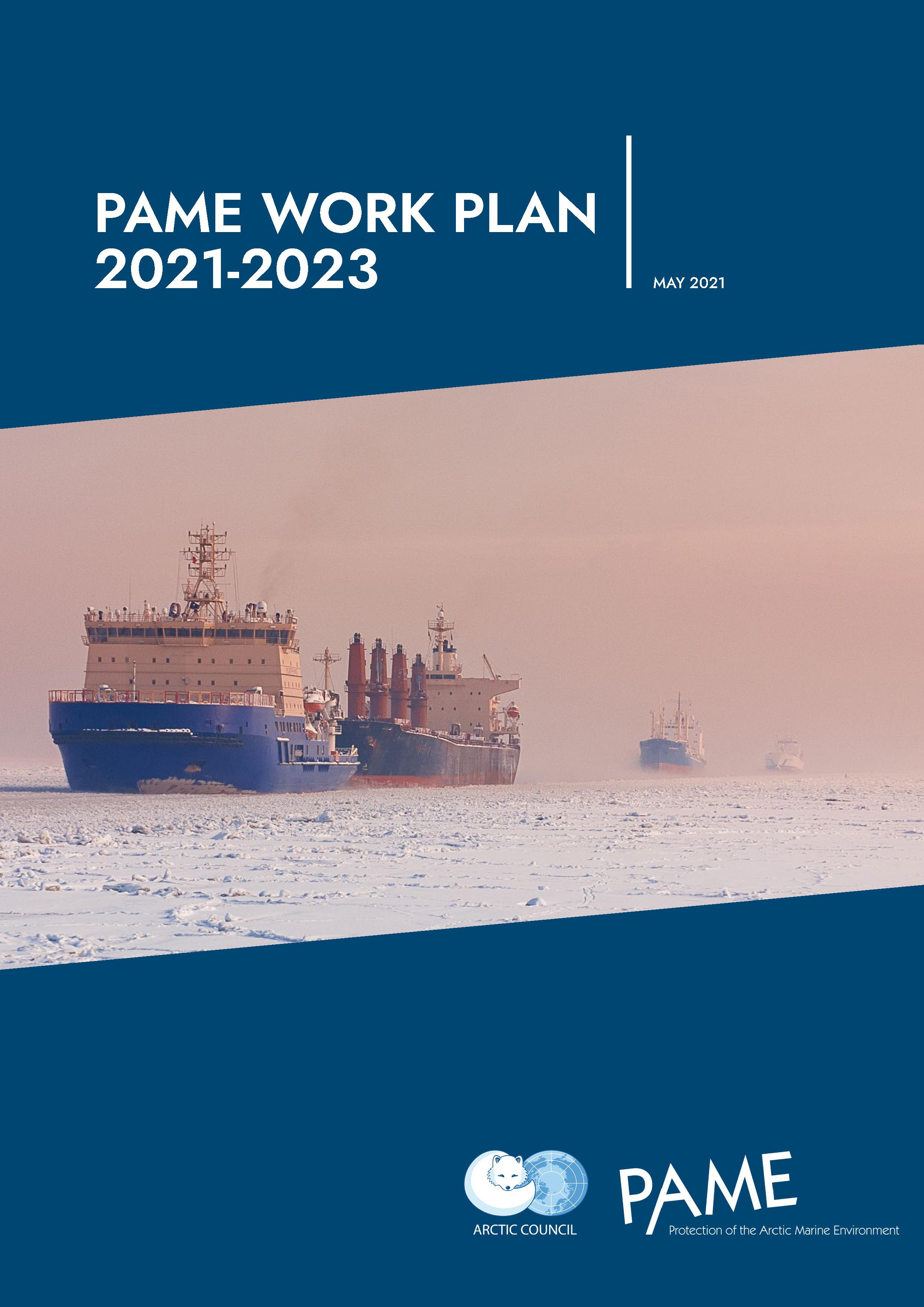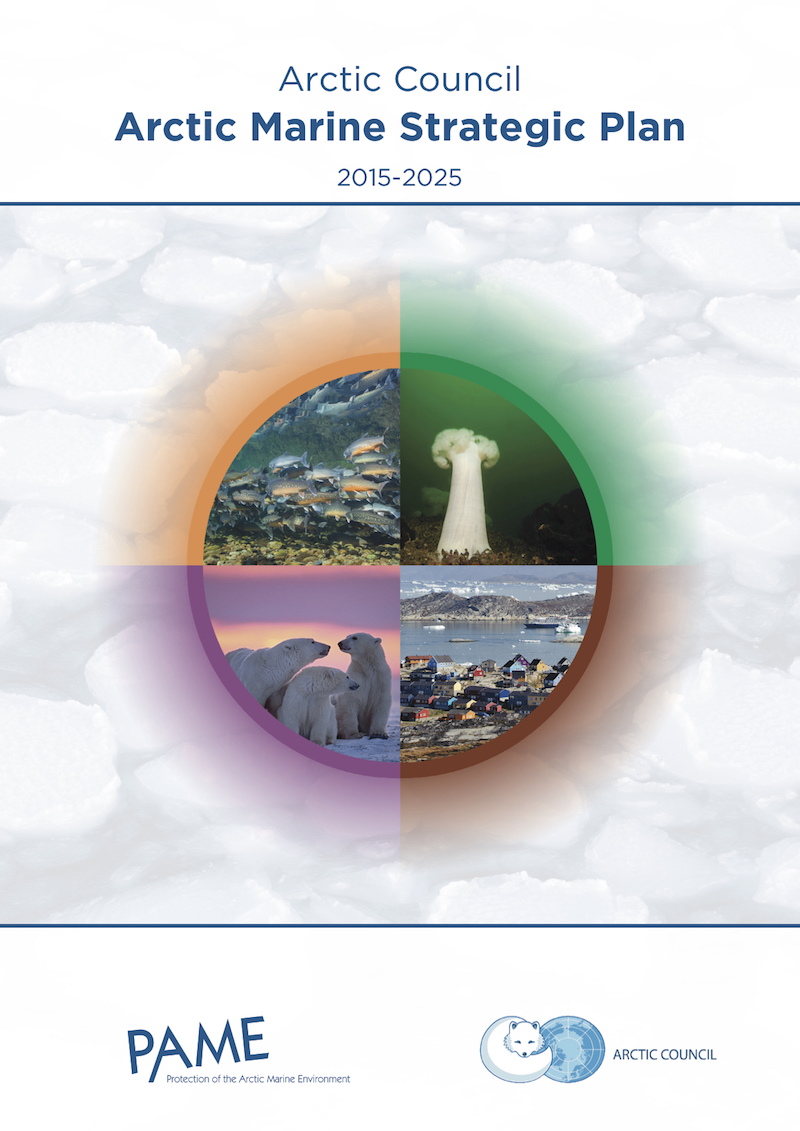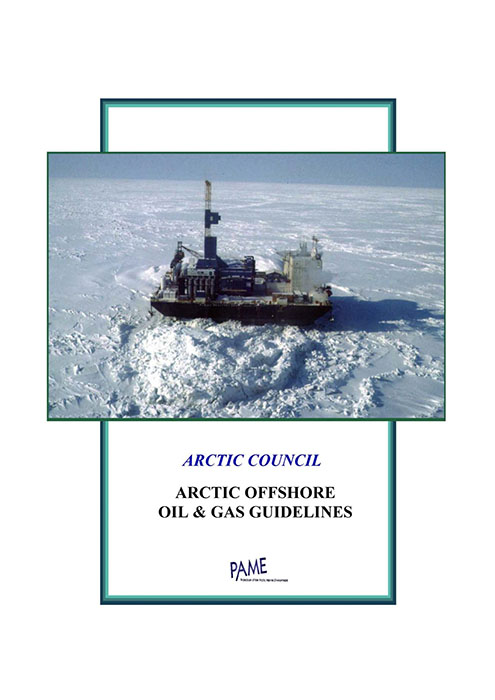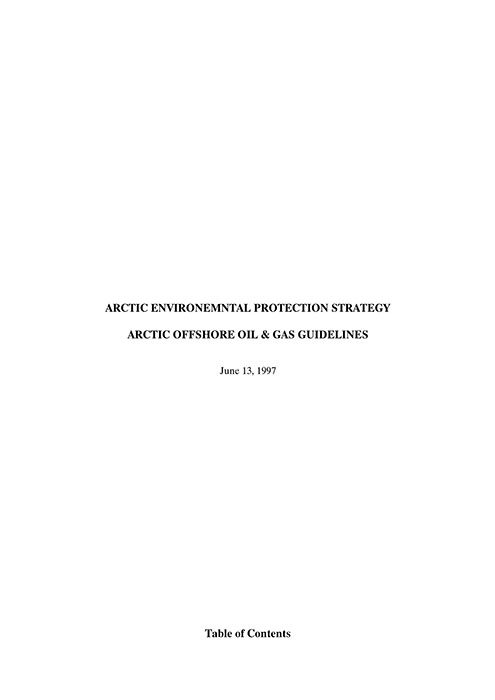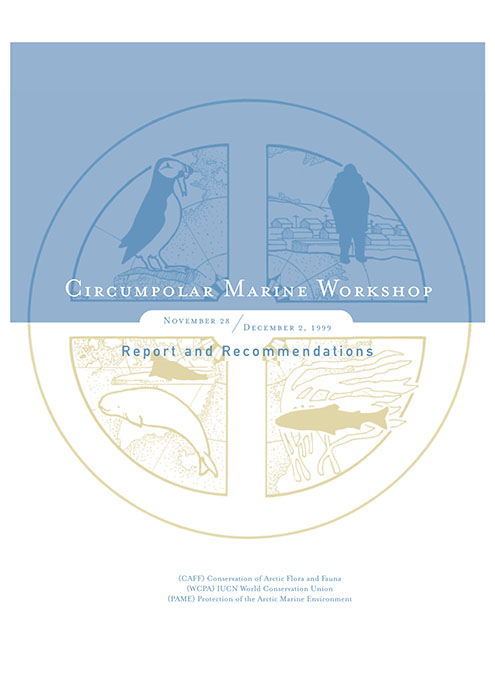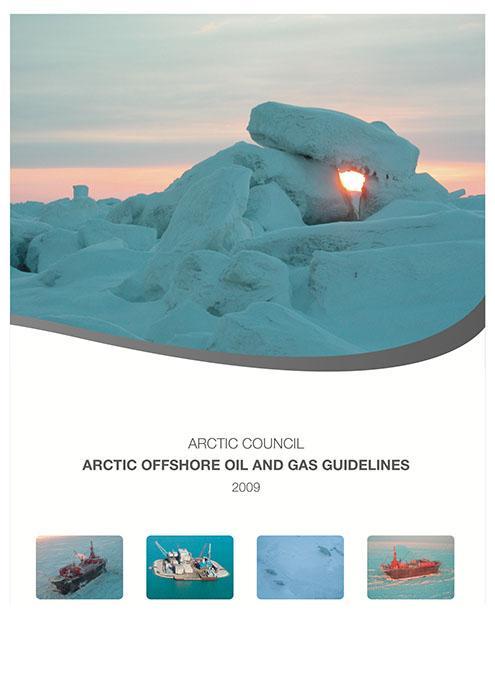 The Arctic Offshore Oil and Gas Guidelines are intended to be of use to the Arctic nations for offshore oil and gas activities during planning, exploration, development, production and decommissioning. They were developed to ensure a recognized a uniform understanding of the minimum actions needed to protect the Arctic marine environment from unwanted environmental effects caused by offshore oil and gas activities.
The Arctic Offshore Oil and Gas Guidelines are intended to be of use to the Arctic nations for offshore oil and gas activities during planning, exploration, development, production and decommissioning. They were developed to ensure a recognized a uniform understanding of the minimum actions needed to protect the Arctic marine environment from unwanted environmental effects caused by offshore oil and gas activities.
The Guidelines are intended to define a set of recommended practices and outline strategic actions for consideration by those responsible for regulation of offshore oil and gas activities (including transportation and related onshore activities) in the Arctic.
The Guidelines were developed to help secure common policy and practices. The target group for the Guidelines is thus primarily the authorities, but the Guidelines may also be of help to the industry when planning for oil and gas activities and to the public in understanding environmental concerns and practices of Arctic offshore oil and gas activities.
While recognizing the nonbinding nature of these Guidelines, they are intended to encourage the highest standards currently available. They are not intended to prevent States from setting equivalent or stricter standards, where appropriate.
Third Ministerial Conference on the Protection of the Arctic Environment expresses concern regarding the potential impacts related to future increases in offshore petroleum activity in the Arctic, and requests PAME to develop "guidelines for offshore petroleum activities in the Arctic, in particular guidelines for timely and effective measures for protection of the Arctic environment."
The Guidelines are approved by Arctic Ministers. A periodic review is encouraged. "The endorsement of these Guidelines recognizes a uniform understanding of the minimum actions needed to protect the Arctic marine environment from unwanted environmental effects caused by offshore oil and gas activities."
The Guidelines were updated and improved by PAME with the help of EPPR, AMAP, and CAFF with an attempt to incorporate the principles of sustainable development. The 2002 update was greatly assisted by the involvement and comments received from representatives of Arctic, regional and other governments, non-governmental organizations, industry, indigenous people, and the scientific community to provide agreed guidelines for offshore oil and gas activities in the Arctic.
Further updated version of the Guidelines is approved. They took in additional guidance and information that were provided by the Arctic Council, including the Human Health in the Arctic Report (2003), the Arctic Marine Strategic Plan (2004), the Transfer of Refined Oil and Oil Products in the Arctic (TROOP) Guidelines (2004), the Arctic Shoreline Clean-up Assessment Technique (SCAT) Manual (2004), the Arctic Guide for Emergency Prevention, Preparedness and Response (2008), the Arctic Climate Impact Assessment (2004), the assessment, Oil and Gas Activities in the Arctic—Effects and Potential Effects (OGA, 2009).
- adverse effects on air and water quality that exceed national or applicable international standards or regulations;
- changes in the atmospheric, terrestrial (including aquatic), glacial or marine environments that exceed national or applicable international standards or regulations;
- detrimental changes in the distribution, abundance or productivity of species or populations of species;
- further jeopardy to endangered or threatened species or populations of such species;
- degradation of, or substantial risk to, areas of biological, cultural, scientific, historic, aesthetic or wilderness significance;
- adverse effects on livelihoods, societies, cultures and traditional lifestyles for northern and indigenous peoples; and
- adverse effects to subsistence hunting, fishing and gathering.
Rio Declaration shall be widely applied by States to oil and gas activities according to their
capabilities. Where there are threats of serious or irreversible damage, lack of full scientific
certainty shall not be used as a reason for postponing cost-effective measures to prevent
environmental degradation.
polluter pays approach as reflected in Principle 16 of the Rio Declaration. The polluter should, in
principle, bear the cost of pollution, with due regard to the public interest and without distorting
international trade and investment.
processes, activities and products that need improvement, and implement necessary improvement
measures. The process of identifying what can be improved may be based on mappings and
results of analyses, investigation of situations of hazard and accident, or near hazards and
accidents, handling of non-conformities, experience from internal follow-up or auditing, or
experience gained by others.
• protection of biological diversity;
• the duty not to transfer, directly or indirectly, damage or hazards from one area of the marine environment to another or transform one type of pollution into another;
• promotion of the use of best available technology/techniques and best environmental practices
• the duty to cooperate on a regional basis for protection and preservation of the marine environment, taking into account characteristic regional features and global
climate change effects;
• the need to maintain hydrocarbon production rates in keeping with sound conservation practices as a means of minimizing environmental impacts;
• development which meets the needs of the present without compromising the ability to meet the needs of the future;
• integration of environmental and social concerns into all development processes; and
• broad public participation in decision making.
The goals of the Workshop were to develop practical measures to protect the Arctic marine environment and conserve its biodiversity and to facilitate collaboration among Arctic countries, indigenous peoples and other stakeholders.
The objectives were to develop common tools and mechanisms for circumpolar marine management, to discuss barriers and opportunities for marine conservation and an integrated approach to marine management, to identify gaps in the knowledge base and determine ways to address these, to integrate traditional with western scientific knowledge and to develop mechanisms
to engage local and indigenous peoples in marine management.
impacts of offshore oil and gas exploration, development, transportation and infrastructure on the
environment and human communities so as to inform decision-making.
Arctic countries use a variety of methods and approaches. Assessments may have a broad scope or be project specific. The responsibility for
conducting the EIA or preliminary impact assessments (PEIA) varies from country to country.




